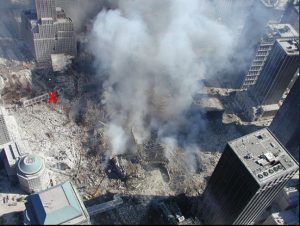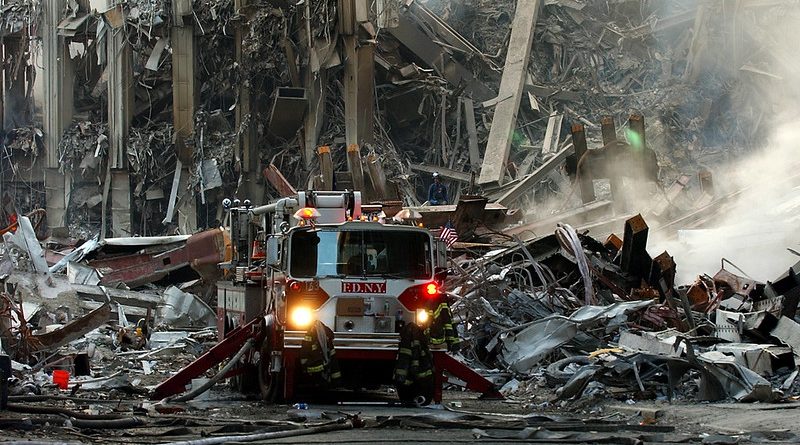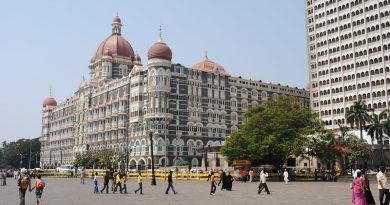Ground Zero & the phenomena of ‘Dark Tourism
History Facts
Where: Manhattan, New York, USA
When: 2001
History: Site of the former World Trade Center, destroyed in a terrorist attack, now attracting twice as many visitors as a memorial space in construction
Born from a ‘Day of Terror’
In 2002, the ruins of the World Trade Center in New York attracted 3.6 million visitors; the observation deck from the intact towers used to pull in an average of 1.8 million tourists per year. ‘Ground Zero’ as the site became known in the aftermath of the terrorist attacks on September 11 2001 appears to be the newest, most unlikely tourist attraction in the Big Apple.
Within months of the attacks the area became the latest home of sightseers and hawkers; around the site’s perimeter all manner of souvenirs, from Ground Zero NYC T-shirts and baseball caps to ‘Day of Terror’ commemorative books and DVD montages of the disaster are available. There’s even a big line in Osama bin Laden printed toilet paper feeding into people’s anger against the supposed terrorist mastermind. Tour guides lead groups around the site, pointing out places like the spot where fire fighters erected the American flag in rubble.

Photo of the 9/11 memorial taken from the World Financial Center, as it appeared in June 2012, photo by Cadiomals
Other ‘dark tourism’ sites
But is this really such a surprising phenomenon? Across the world there are lots of sites of human depravity which attract visitors. Auschwitz in Poland was listed a UNESCO World Heritage Site in 1979; it’s mandatory for all German schoolchildren to visit during their education and it’s virtually an Israeli right-of-passage to visit this Nazi extermination camp. The Killing Fields of Pol Pot’s genocidal regime in Cambodia are drawing more and more tourists and Hiroshima in Japan (where the Allies dropped the atomic bomb that ended World War II in the east) is also on the tourist trail.
Within the United States itself there are already several tourist destinations defined by tragedy. The Sixth Floor Museum in Dallas’ former Texas Book Repository is one such place. It opened 26 years after gunman Lee Harvey Oswald shot President Kennedy from a sixth-floor window there – it has since become the city’s biggest attraction, with 450,000 people a year. Ford’s Theater, where President Lincoln was assassinated, the museum in the Lorraine Motel in Memphis where Dr Martin Luther King was shot and Pearl Harbour are all historic memorial sites.
Therapy or morbid obsession?
Because of the cataclysmic effect 9/11 had on the American psyche and the shockwaves it had across the world, this latest manifestation of disaster tourism has brought the whole issue into sharp relief. Papers in the States have been full of articles debating its moral validity and the New York tourist board has found it hard to approach its newest attraction, conscious of the need not to appear to be capitalising on the tragedy. Opinions differ radically; for some it’s like slowing down to look at a crash site – like September’s Mission (a victims’ families advocacy group) who called the vendors near the site and their customers ‘unbelievably sick’. Residents near the site, finding it hard to recover from the trauma anyway, feel that the throngs of tourists are intruding on their community. Others however, see it as a legitimate part of the national grieving process – a form of therapy. Others still, see it as the ultimate example of the American habit of commodification at work – like the authors of ‘Dark Tourism’ who suggest that it’s a typically westernised response to horror.
The question of its legitimacy are tied up in questions of memory, trauma and politics. In fact, it’s something that hasn’t really been seriously addressed until now. What is certain is that ‘dark tourism’ isn’t a new phenomenon – the violent death of the British Archbishop of Canterbury in the town’s cathedral in the twelfth century attracted throngs of people to the site. Perhaps they were pilgrims or perhaps it was morbid curiosity. With such a long history, it’s safe to say, whether you like it or not, dark tourism is here to stay.
MORE INFORMATION
Enter Ground Zero
A dedication to the men and women at World Trade Center ground zero.
By Kate Griffiths




